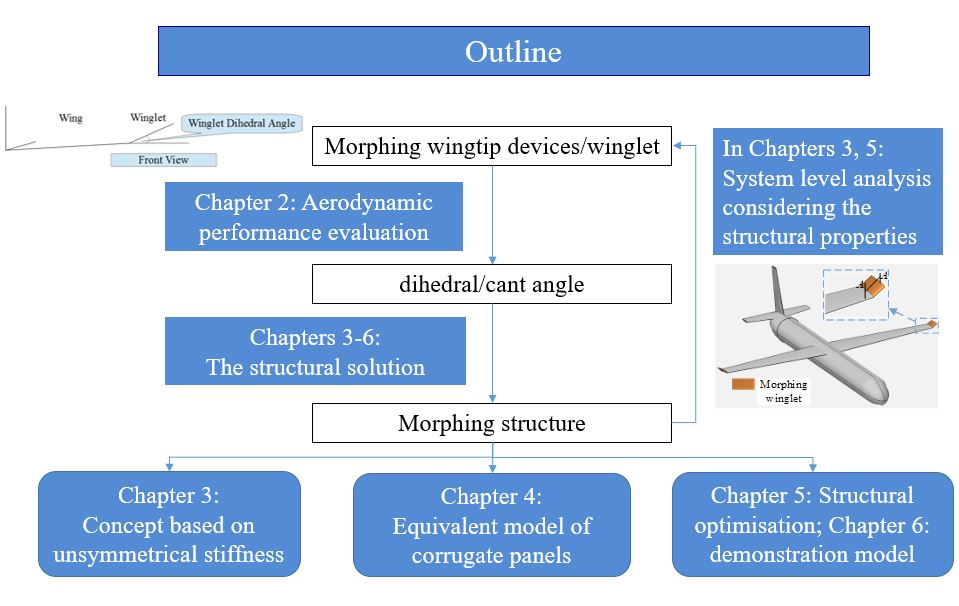Research topic: Design and Optimisation of Morphing Aircraft
Supervised by: Professor Michael Friswell and Dr Hamed Haddad Khodaparast
Swansea Unviersity Cronfa: https://cronfa.swan.ac.uk/Record/cronfa40876
Abstract: Morphing has the potential to improve the aircraft performance by adaptively
changing the shape during different flight conditions. The capabilities of changing
shape and carrying aerodynamic loads simultaneously make the design of the
morphing structure challenging. The weight increase of morphing aircraft should
also be considered, which requires system level analysis and evaluation, and the
optimisation of the morphing structure.
The thesis focuses on morphing wingtip devices, which are small in size but have a
significant influence on the aerodynamic performance.
A compliant structure based on unsymmetrical stiffness is proposed. The compliant
structure has unsymmetrical stiffness allocation, which will have differential axial
deflections when it is actuated. The differential deflections lead to a rotation of the
compliant structure. A simplified model of the compliant structure is built, and
analytical expressions are derived, which highlight the effects of the total stiffness
and the stiffness asymmetry. A case study also represents the system level influence
of retrofitting a morphing winglet to a baseline wing.
Corrugated panels are applied to provide the stiffness asymmetry. An equivalent
model is built to predict the deformation of the corrugated panels. A coupling
between the vertical deflection and the axial load is found, which will affect the
deflections of the compliant structure significantly. An equivalent beam is used to
represent the corrugated panel. The equivalent model is verified by detailed finite
element models and experiments.
The optimisation of the compliant structure is performed. The actuation force is the
objective, while the aerodynamic force and the shape change are included in the
optimisation. The influence of the different aerodynamic forces and target shape
changes are investigated, which shows the compromise made by the optimised
variables to satisfy the constraint and reduce the actuation force. The compliant
structures in the earlier case study are optimised, which shows a significant
performance increase at the system level.
A demonstration model of the morphing winglet is designed, manufactured and
tested. To fit within the thickness of the airfoil, a sequence of optimisations is
performed to find the suitable geometry variables. An extreme stiffness asymmetry is
required to reduce the actuation force, which validates the proposed morphing
structure concept. Static tests and wind tunnel tests are performed to validate the
model.
Finally, the contributions of the research are summarised, together with some future
work on different aspects.
